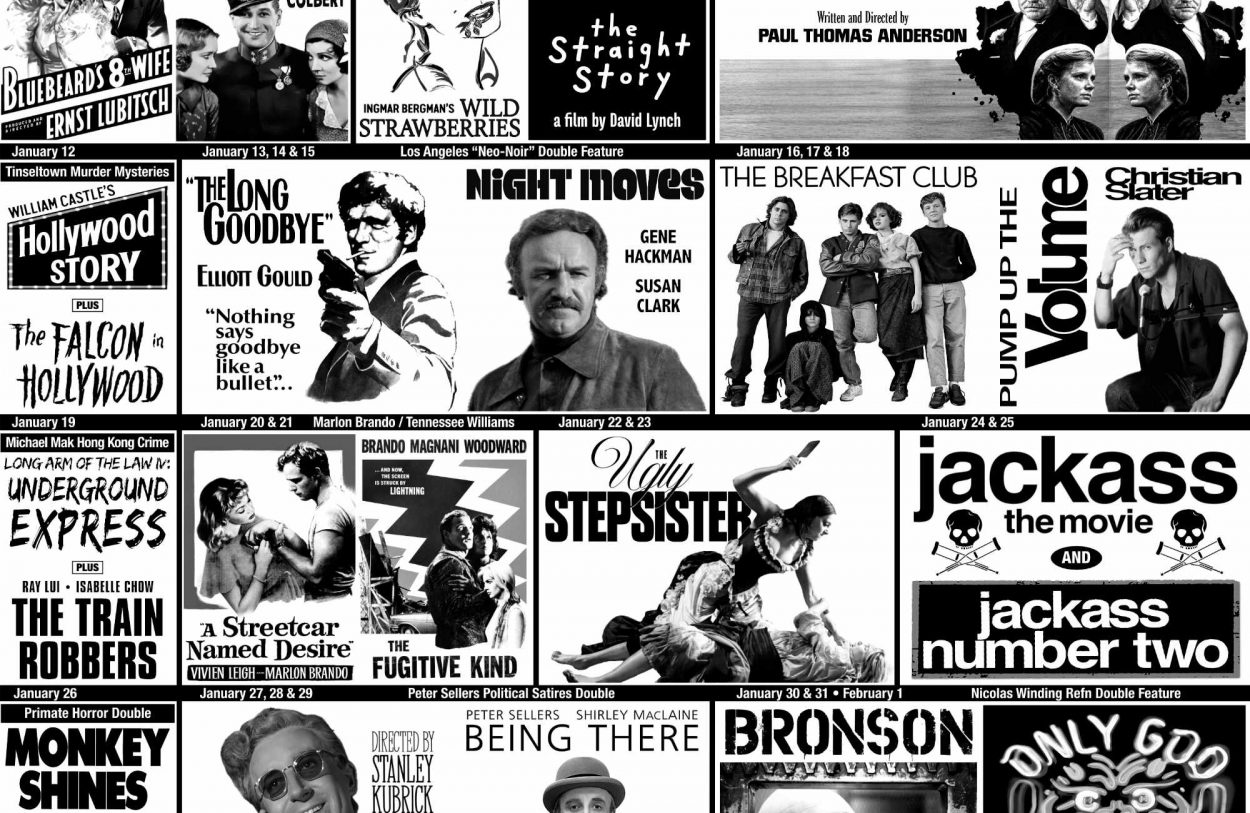I wrote stories from the time I was a little girl, but I didn’t want to be a writer. I wanted to be an actress. I didn’t realize then that it’s the same impulse. It’s make-believe. It’s performance. The only difference being that a writer can do it all alone. I was struck a few years ago when a friend of ours – an actress – was having dinner here with us and a couple of other writers. It suddenly occurred to me that she was the only person in the room who couldn’t plan what she was going to do. She had to wait for someone to ask her, which is a strange way to live. – Joan Didion
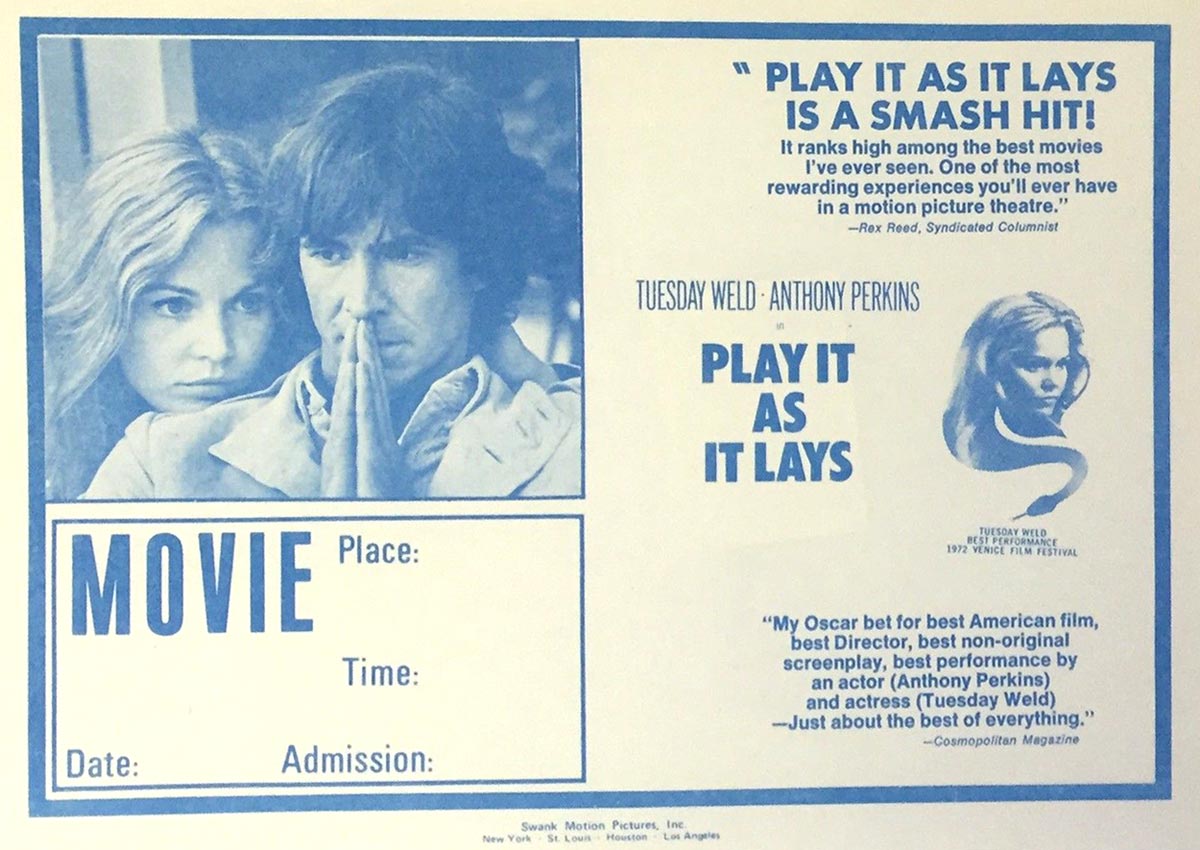
All of us live in our own movie. (Don’t we?) But how do we control our narrative? Well, of course we can’t. With all of those around us – family, friends, lovers, husbands, wives, one-night stands or just a single conversation at a desert rest stop with a stranger, our self-perception is passed on to another person, translated by other eyes and ears creating their own movies – movies either on replay or nearly forgotten, a flickering memory of that one person in that one place at that one time. Unless it is told to us, or, in the case of those writing about or filming us (or both), we can’t know. And we can’t control the sometimes warped perception of “the truth” (whatever that is), their truth, not ours. (Which doesn’t necessarily mean it’s untrue either.) There is so much that others can pour into us, or live through us, particularly lovers and friends, and if we are depressed or troubled especially, the end result may be banishment or beauty or, if embittered, a mythologized distress, an exaggerated fantasia of spite. In many cases, muses are born from this kind of heightened narrative. And drained. Magnetic lightning rods like Edie Sedgwick and Neal Cassady, artists themselves, were alluring and inspiring. And troubled. And in the end, weary, depressed and drug-addled. They sparked genius, but Sedgwick (a gifted model and actress) and Cassady (a brilliant writer), both of whom everyone wanted to fuck (and fuck and fuck, sometimes they probably didn’t want to fuck) found themselves, by the end of it, lost. And nothing brings out the vipers and the leeches like a vulnerable person, traveling along to the next adventure towards oblivion.
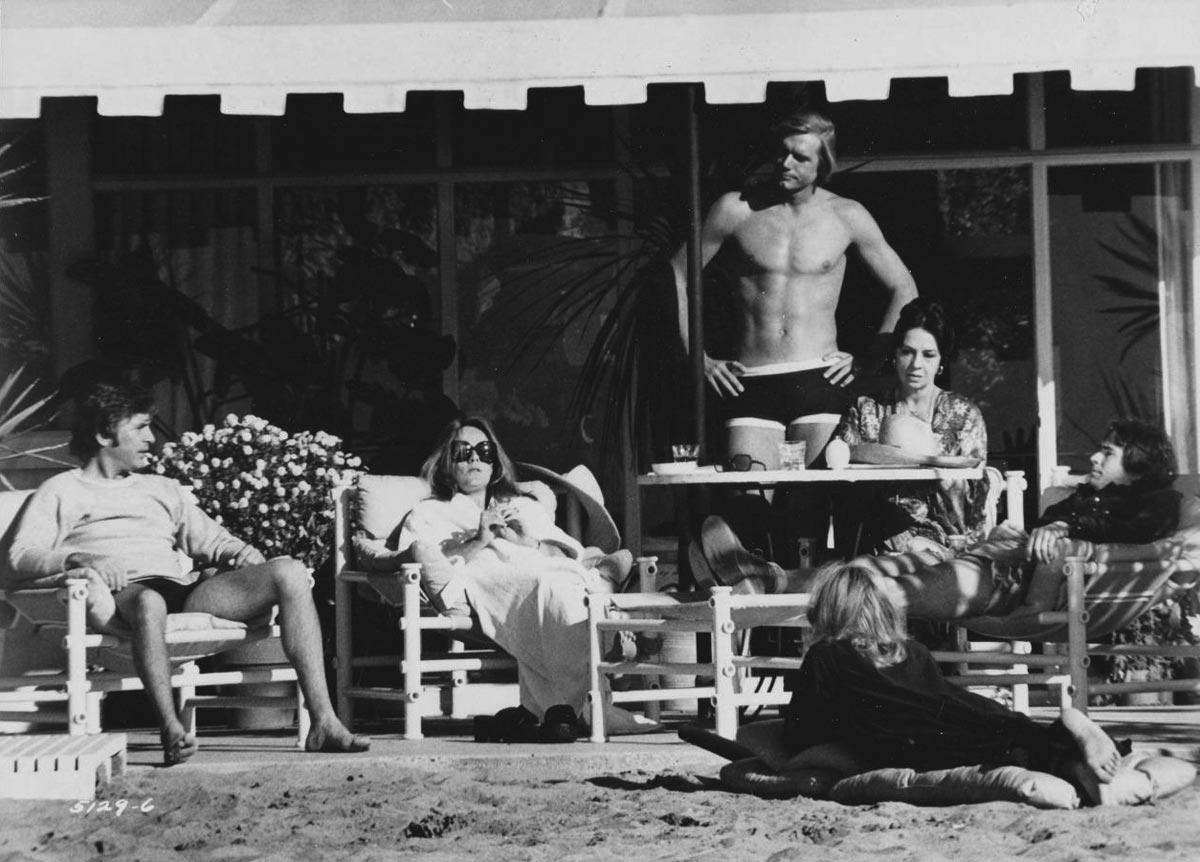
In Frank Perry’s Play It as It Lays (adapted from Joan Didion’s novel by Didion herself with her husband, John Gregory Dunne), Hollywood, already filled with vipers and leeches and artists and muses, is the perfect backdrop for this type of dramatic discernment, as model and actress Maria (Tuesday Weld, very much a Sedgwick/Cassady mold breaker), wanders through the spread-out city with all of its surrounding areas and high desert lonesome in a state of depressive detachment and grim determination of … something. She’s not sure. Geographically, Los Angeles provides ample space for this kind of physically roaming narrative as Maria drives the labyrinthine freeways, stopping off in small desert towns, drinking cold cokes or engaging in little dramas (or big ones), whether with another human or talking on a roadside payphone. She has her own story and she’s trying to weave together her own narrative connection – to be her own film editor. Fragmented trips to hotels, Malibu dinner parties, Beverly Hills shindigs, movie shoots, apartments and swimming pools propel her to her who-knows-what future. And so, like many an emptied Angeleno, she’s “not too crazy about people.” There are friends and lovers, she’s always one step away from a party or a conversation, good, bad, banal or momentarily exciting, as she talks or listens to others talking, but she sometimes says nothing at all. She wonders what others close to her are thinking. She’s decided to not give a fuck. In the novel Maria observes:
If Carter and Helene want to think it happened because I was insane, I say let them. They have to lay it off on someone. Carter and Helene still believe in cause-effect. Carter and Helene also believe that people are either sane or insane. Just once, the week after the desert, when Helene came to see me in Neuropsychiatric, I tried to explain how wrong she had been when she screamed that last night about my carelessness, my selfishness, my insanity, as if it had somehow slipped my attention what BZ was doing. I told her: there was no carelessness involved. Helene, I said: I knew precisely what BZ was doing. But Helene only screamed again. Fuck it, I said to Helene. Fuck it, I said to them all, a radical surgeon of my own life. Never discuss. Cut. In that way I resemble the only man in Los Angeles County who does clean work.
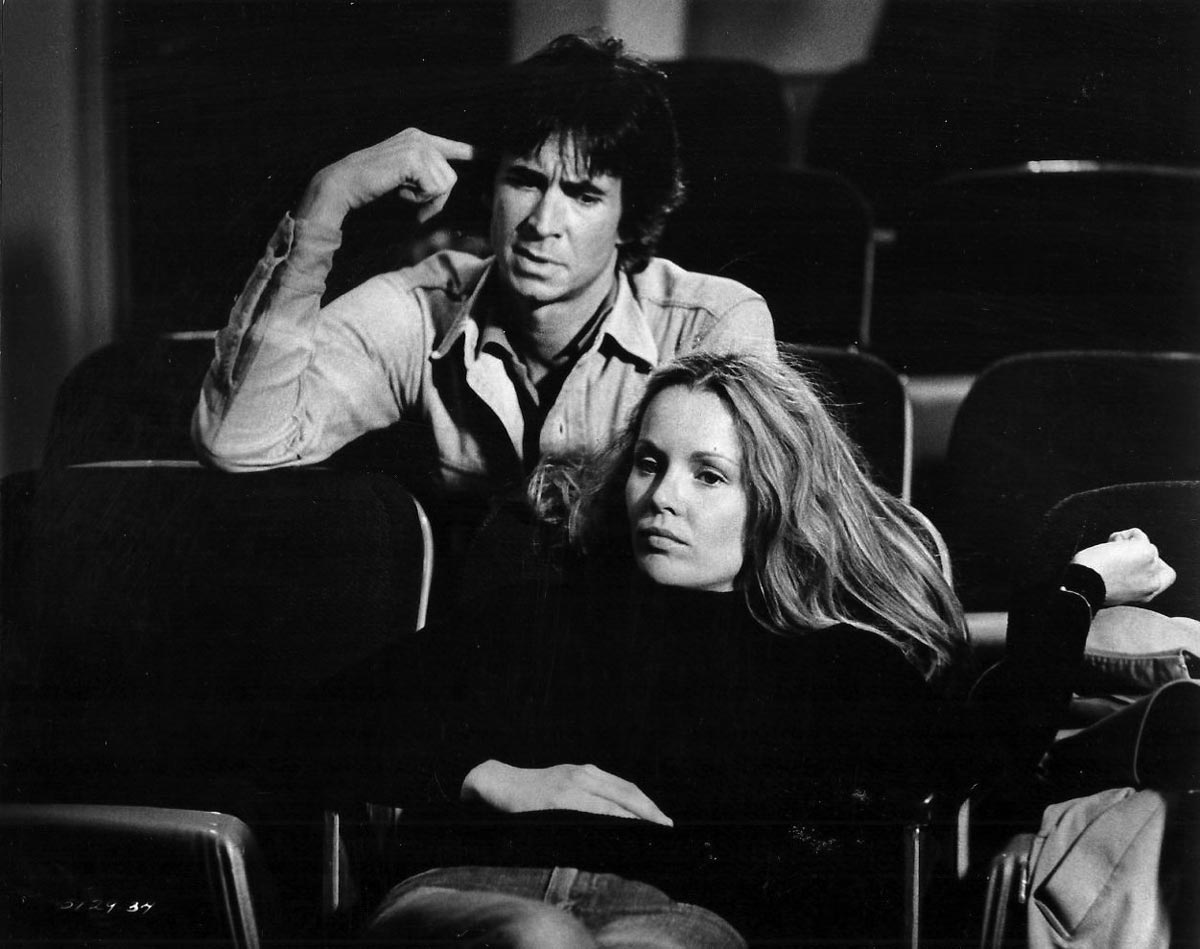
Carter’s second picture, in which Maria appears (in the novel, she’s gang raped in the film, not for real), was a hippie biker movie (kind of like the movies actor Roarke actually starred in), and his first picture, named Maria, is a cinéma vérité work starring… Maria. Carter followed Maria around with his camera while she, in the only scenes in which she appears momentarily happy (this was a while back), talks about her own life. She laughs and smiles discussing her parents from a dusty one horse desert town (Silver Wells, Nevada), her western mythology, she seems proud of, sad (her parent are both dead, and died tragically) but it defines her. He prods her on camera, asking about who her father was balling and if she was jealous of this, assuming she wanted to ball her own father, clearly intending to provoke a reaction the way Chuck Wein did to Edie Sedgwick in Andy Warhol’s Beauty No. 2. Carter likes showing this movie, and she hates watching it when he does. One night she sees him on TV discussing Maria with a panel of cinema intellectuals recalling how Maria’s personality was so her – as he addresses her in his view through his camera, now framed though his discussion. His most artistic success is Maria’s own life and presence, filmed and edited by him, which must annoy her. As their marriage is disintegrating, Maria listens to Carter and the moderators, a bit pretentiously, dig into performance and real life:
Carter: “I was experimenting. I was trying to see how far I could go before breaking down the barrier between film and real. And yet the personality constantly shattered the conventional camera, subject relationship.
First moderator: That personality being your wife’s.
Carter: Well, she wasn’t my wife, yet. No.
Second moderator: You didn’t just hire her, Carter. You couldn’t have gotten that kind of performance.
Carter: Well, that’s the whole point of the film. It wasn’t a performance.
Third moderator: You mean, existentially it wasn’t a performance.
Carter: It wasn’t a performance. It was not a performance.
First moderator: This was her life, as it were.
“As it were.” And with that Maria turns off the TV. In another scene on a film set directing his newest picture, Carter talks existential while being interviewed by an on-set reporter, and Maria is once again irritated. Later that day when Carter seeks her out to talk, she’s buying lunch. She snaps back at him: “Existentially, I’m getting a hamburger.” It’s a funny line (not in the novel) and you get the feeling Carter knows she’s probably smarter than he is. This runs through Didion’s book and reminds me of Didion’s idea about performance and writing – if only Maria could write her own story, not rely on acting in someone else’s story, perhaps she could help herself and not spend so much time waiting. As she wheels around in her yellow Corvette just to drive, cracking hard boiled eggs on the steering wheel, the wind blowing through her long blonde hair, she is attempting escape and a certain kind of organization through the Los Angeles freeways, as one pieces together the various routes and towns snaking around the city. You’ll always end up somewhere, sometimes even proud of finding your destination (Barstow, Oxnard, Palmdale) which Perry observes, beautifully, in shooting desert towns, those places that, even just a couple of hours outside of Los Angeles, feel like another universe. Carter’s making a movie in the desert, likely inspired by Maria’s background, and she’s more at home there than anyone else on set it seems, talking to a waitress in a diner without any condescension or awkwardness. These scenes are lovely – Perry casting desert denizens as those who couldn’t care less about Hollywood, but not the wiser for it necessarily (and people out there tend to not give two fucks about Hollywood). Maria remarks that the waitress sweeping up the same desert dust – it’s only going to return seconds later with the wind – but the woman ignores her. She just keeps sweeping. Everyone has their rituals.

Maria and Carter have a mentally disabled daughter who is shuttered away in a sanitarium, which distresses Maria to no end. Though she visits her, Maria’s constant hope is to take the little girl away and raise her alone – canning fruit and jams, she thinks, in a strangely banal fantasy that becomes startlingly dramatic for the way Weld pronounces “apricot preserves, sweet Indian relish, pickled peaches,” comforting a despairing and dying B.Z. In one of their many almost blackly humorous arguments, Carter threatens that Maria will never see their child again if she doesn’t get an abortion (she’s pregnant from an affair) and he throws the doctor’s number on Maria as she sits up in bed. This is an abortion she’s not sure about getting (“He does clean work”) but Carter doesn’t want his career in jeopardy should his wife wind up in the gossip pages. The abortion does not help Maria’s mental health and she goes alone – save for the abortionist’s assistant, wearing all white and smacking gum, who accompanies her. This makes for one of the greatest sequences of the movie – a grim distillation of Maria’s need to roam mixed with this terrifying invasion into literally, her most private places.
With cinematographer Jordan Cronenweth and editor Sidney Katz, Perry shoots this trip to the abortionist beginning with Maria trying to find where in hell she’s to meet the abortionist’s assistant who rides with her to the doctor. She picks him up under a big red “T” (“What big red T?” she asks, discussing directions over the phone. He answers exasperated, “The Thrifty Mart. The Thrifty Mart, Maria.”) After picking him up in a gorgeously composed shot (it looks like a William Eggleston photograph) under the looming “T,” a beacon of “T” to the abortionist, they then share a perfectly normal conversation that stars out with: “Don’t take offense if I ask you something…” You suspect the “offense” will have something to do with the prospective abortion, but instead, it’s about her Corvette: “What kind of mileage you get on this?” He then discusses his thoughts of getting out of leasing cars and buying himself a Camaro. They pull into the abortionist’s, and in a series of swift cuts (the movie is filled with intense, razor-like cuts that could almost slice your hand and bleed), we see in quick succession, a bloody object dumped in a garbage can, gloved doctor’s hands washed in a sink and the loud droning drain as Maria drearily asks, “What do you do with the baby?” When finished, Maria walks back out to the assistant who is watching a western on a small black and white TV. She sits down and an Earl Scheib advertisement starts playing. The assistant, not understanding the absurdity of the statement (or perhaps he does) says to the woman who just received an abortion: “You missed a pretty fair movie, Maria.”
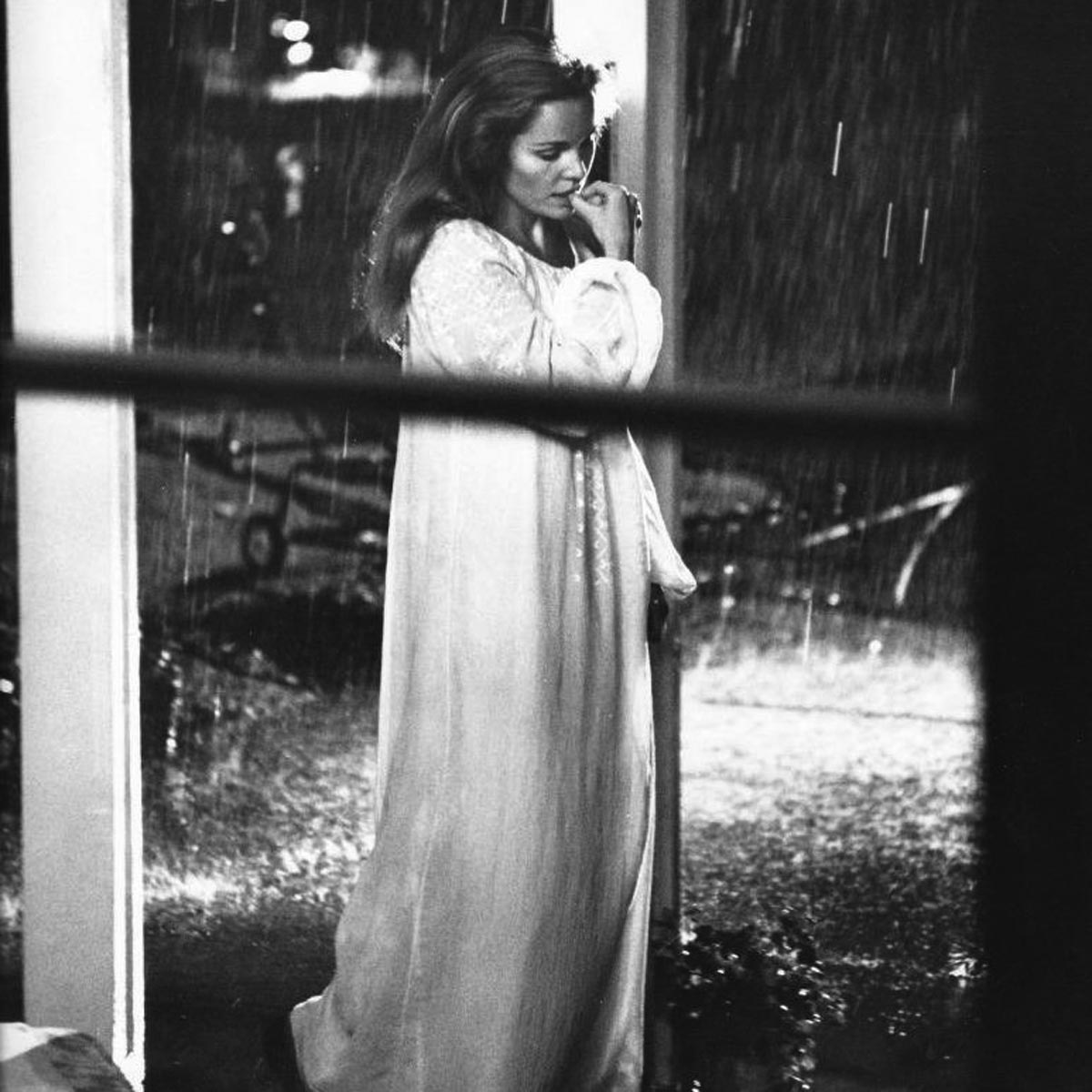
The picture floats and swerves and cuts with observations and weirdly timed statements like this throughout, brilliantly matching the fragmented time fame and switching POV of Didion’s novel, while wandering from place to place and person to person with Maria’s depressed but succinct sensitivities. It’s often genius, so that the film was poorly to adequately received at the time (though Roger Ebert loved it) seems unduly unjust to me. Many critics thought it very pretty, and Weld and Perkins fantastic (they are), but very empty (it’s not, and it is, precisely the point). Or that Perry was all wrong for Didion (he’s not). Didion’s novel has sometimes single-paragraph sentences, terse observations met with deadpan responses and Perry visualizes her manner stunningly. And he does so as a Perry film, not just a Didion film – this is what happens when another is helming your own work, even if you write the screenplay – you cannot control your narrative once it’s in the eyes of the other beholder. No surprise Didion has expressed admiration for film editors. Those who construct.
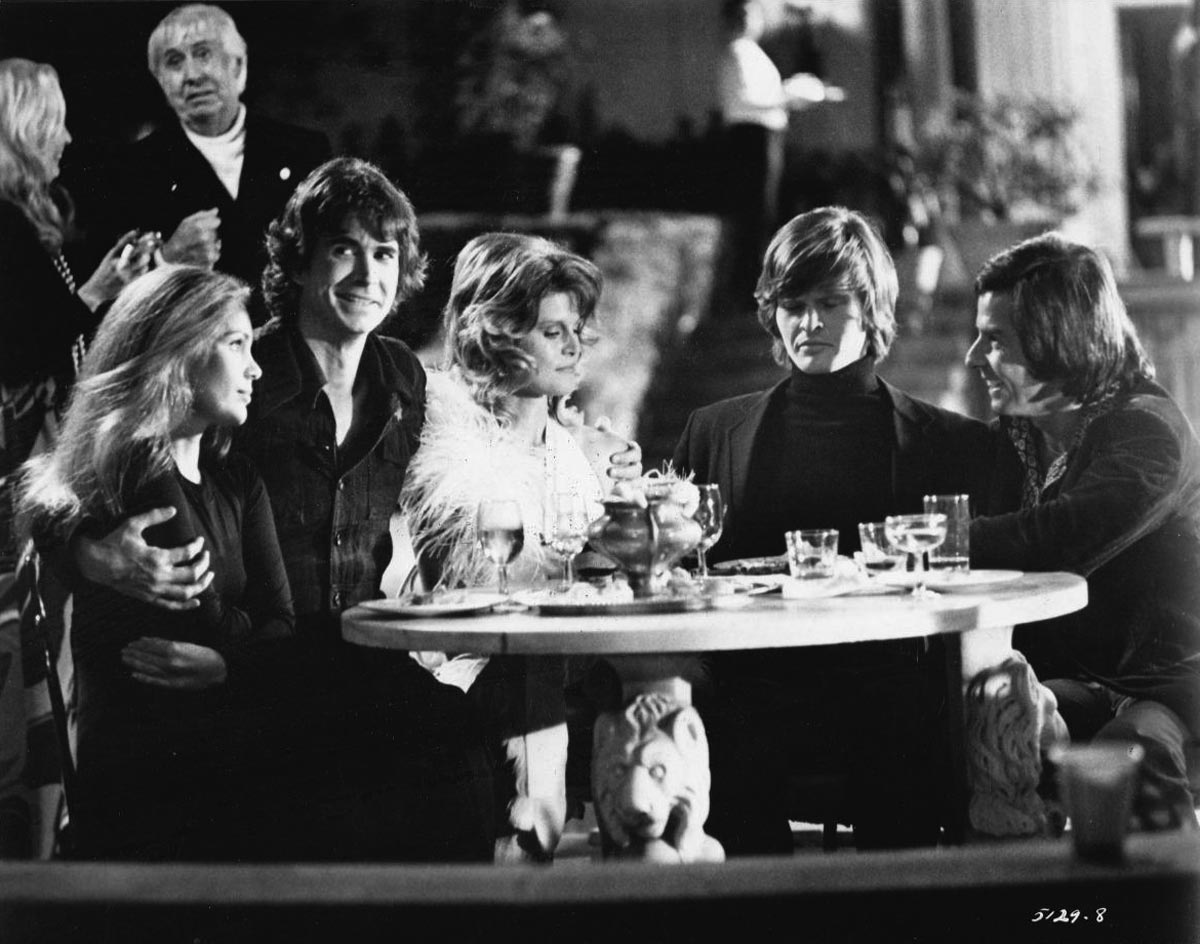
Weld and Perkins float through the picture almost as phantoms haunting their own story, and Perry’s sharp scene shifts, from loud planes flying overhead to Weld’s wild gun shots from her car, hair mussed all over the place, to an entrancing opening and closing of Weld walking the perfectly manicured tree-lined grounds of her institution (in real life, it’s the famed Greystone Mansion, where oil tycoon William Doheny’s son Ned was found dead in a murder/suicide with his assistant/rumored lover, Hugh Plunkett) accords and intersects Weld’s (and Perkins’) thoughts, spoken outright and interiorly felt. Perry’s style is as graceful and as jarringly angular as Perkins’ thin frame, cuddled in Tuesday Weld’s lap, overdosing on Seconal. The picture is loaded with style (which some unfairly hold against it), a necessary surface beauty, critiquing that very surface beauty while reveling in it, showing spurts of intense film work to be met with many more lazy, debauched days dragging into nights in which bored rich people discuss fresh lemon or lemon reconstituted, how they eat breakfast (Carter’s breakfast discussion is amusingly dull) or the jolt of poppers that a vacuous actor inhales before shagging Maria. The actor must also watch himself on TV before getting aroused, another comically caustic moment via Didion and Perry.
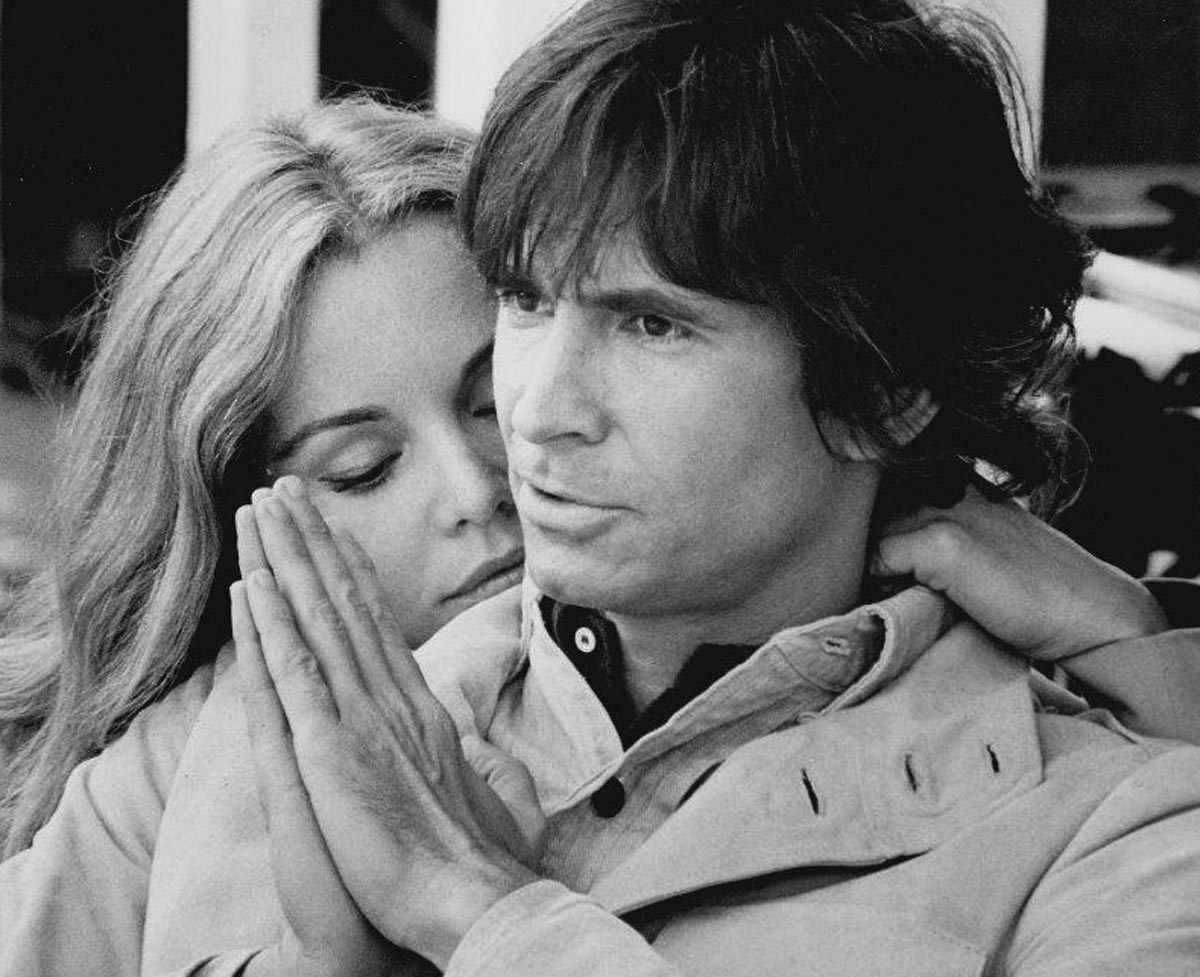
Weld, Perkins and Perry are a divine threesome – all three serious but grimly funny, attractively understated with bursts of psychodrama and shock, weird but never too crazy. And sad. (Also why Carrie Snodgress, Richard Benjamin and Frank Langella are perfect in Perry’s bleakly amusing and disturbing Diary of a Mad Housewife.) Perry has an offbeat, singular talent for dissecting despair and upper class ennui that’s entirely recognizable yet ambiguous, allegorical and often chilling. His wife Eleanor who had been his screenwriter up until Diary of a Mad Housewife, and an excellent artistic partner, was gone by the time this film was made (they divorced), but working with another married couple, Didion and Dunne, was a successful match for Perry. I’ve heard that at one point, Sam Peckinpah was attached, which would have been fascinating (Maria has a restless outlaw in her as well, her Corvette the horse she rides through the desert), but Perry is mightily in sync with Didion’s words and universe. A movie about a troubled woman, marriage, movies; about trying, sometimes in vain, to tell your own story, and a movie about Los Angeles – this was something Perry and Didion understood dry desert air bone deep. In “The White Album,” Didion wrote:
“We tell ourselves stories in order to live … We live entirely, especially if we are writers, by the imposition of a narrative line upon disparate images, by the ‘ideas’ with which we have learned to freeze the shifting phantasmagoria which is our actual experience … Or at least we do for a while.”
Maria is doing this for a while too. At the end of the picture, she walks the spectral grounds of her mental institution, again, filmed at Doheny-haunted Greystone (ghosts communing with ghosts) and narrates: “I know something Carter never knew or Helene or, maybe, you. I know what nothing means and keep on playing.” The off camera voice asks, “Why?” and she looks directly at the camera, breaking the fourth wall and answers, “Why not?” It’s simultaneously nihilistic and Zen, letting go like Sterling Hayden at the end of The Killing or Warren Oates reinforcing William Holden in The Wild Bunch (“Let’s go!” “Why not?”); it also continues her endeavor to define her own story, even if she’s seemingly given up, this time controlling through nothing. Perry wants us to know that this is a movie by film end and now, Maria, her own muse, will play it however she likes, or at least, “for a while.”


